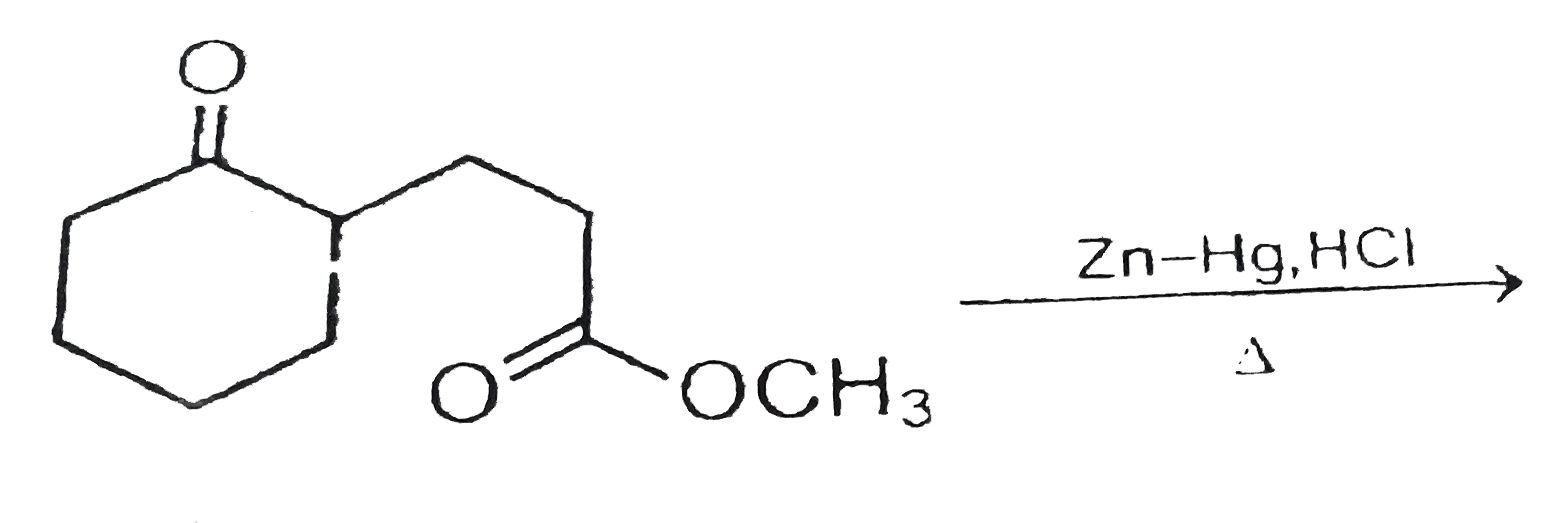Phenol Zn−−→ΔX. The compound X on acylation gives aliphatic aromatic ketone. The reaction is :
Gatteman's reaction
Friedal-Craft's reaction
Wurtz reaction
None of these
The correct Answer is:B
(B) Phenol Zn/Δ−−−→ Benzene Acetylation−−−−−−→AlCl3 Acetophenone.
Topper's Solved these Questions
- ORGANIC COMPOUNDS WITH FUNCTIONAL GROUP CONTAINING HALOGENS Book:DINESH PUBLICATIONChapter:ORGANIC COMPOUNDS WITH FUNCTIONAL GROUP CONTAINING HALOGENS Exercise:Selected Straight Objective Type MCQs
Explore 78 Videos
- ORGANIC COMPOUNDS WITH FUNCTIONAL GROUP CONTAINING HALOGENS Book:DINESH PUBLICATIONChapter:ORGANIC COMPOUNDS WITH FUNCTIONAL GROUP CONTAINING HALOGENS Exercise:Linked Comprehension Type MCQs
Explore 8 Videos
- ORGANIC COMPOUNDS WITH FUNCTIONAL GROUP CONTAINING HALOGENS Book:DINESH PUBLICATIONChapter:ORGANIC COMPOUNDS WITH FUNCTIONAL GROUP CONTAINING HALOGENS Exercise:UNIT TEST - 5
Explore 37 Videos
- NO IDEABook:DINESH PUBLICATIONChapter:NO IDEAExercise:Unit Test -
Explore 1 Video
- POLYMERSBook:DINESH PUBLICATIONChapter:POLYMERSExercise:Matrix
Explore 5 Videos
Similar Questions
Knowledge Check
Phenol Zn−−→ΔX. The compound X on acylation gives aliphatic aromatic ketone. The reaction is :
AGattermann reactionBFriedal-craft reactionCWurtz reactionDNone of these Zn−Hg.HCl−−−−−−−→Δ product of the reaction will be:A
Zn−Hg.HCl−−−−−−−→Δ product of the reaction will be:A B
B C
C D
D
Acylation of benzene to produce aliphatic aromatic ketones is known as
ABenzoin condensationBHydroformylationCClemmensen reductionDFriedel-Cralft 's reaction
Which of the following reactions give aromatic compound ?
View SolutionChlorobenzene Reaction−−−−→XPhenolReaction−−−−→Y
Salicylaldehyde X and Y reaction respectively are
View Solution1−ButyneKMnO4/Δ−−−−−−−→X+Y
Identify X and Y ?
View SolutionCH3−CH3∣CH∣CH3−KMnO4−−−−→(A)H+−−→Δ(B)HBr−−−→ROOR(C)
Product (C) in the above reaction is:
View SolutionBoth carbonyl compounds and acid derivatives though they contain
 grouping yet the reactions given by them are entirely different.
grouping yet the reactions given by them are entirely different.
As Aldehydes and Ketones give addition product with a nucleophile, while carboxylic acid derivatives give nucleophilic acyl substitution through addition/elimination mechanism.

Where X−=−Cl−O−O∣∣C−R−OR,−NR(R) etc.

Why aldeydes and Ketones give nucleophilic addition reaction while acid derivatives prefer nucleophilic acyl substititution reaction?
View Solution


